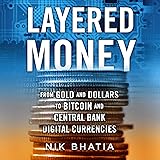Washington Embraces Crypto: A New Era for Digital Assets and Economic Strategy
A major development occurred at Bitcoin 2025 in Las Vegas. Over 35,000 attendees witnessed significant governmental engagement. The White House demonstrated strong support for digital assets. This represented a pivotal moment for the crypto industry.
The administration’s robust presence was truly notable. Vice President JD Vance addressed the crypto community. This marked a historic first for a sitting Vice President. A clear policy directive was communicated to the public.
The Government’s Unprecedented Commitment to Digital Assets
Washington’s involvement in cryptocurrency is rapidly expanding. High-ranking officials are now actively championing digital assets. This proactive approach aims to integrate crypto into national economic policy. It signals a departure from prior cautious stances.
The White House’s AI and Crypto Czar, David Sacks, was a key attendee. The head of the President’s Working Group on Crypto, Bo Hines, also appeared. Even the President’s sons were seen promoting this vision. Such widespread representation underscores serious governmental intent.
Officials are pushing for a future where crypto holds a central position. This commitment is not merely rhetorical in nature. Reports indicate that officials not aligning with crypto policy are being removed. This reflects a resolute stance by the current administration.
This governmental posture signifies a strategic pivot. A new era for digital assets is clearly being ushered in. The recognition of crypto’s potential is now undeniable. Policies are actively being reshaped for this future.
Stablecoins: Powering Demand for U.S. Debt
A primary focus of this new national strategy involves stablecoins. These digital assets are pegged to traditional currencies. The U.S. dollar is a common peg for many. Their inherent stability is viewed as a core advantage.
Stablecoins are increasingly seen as instruments of significant economic power. It is projected that these assets could generate trillions in demand. Specifically, this demand targets U.S. Treasury debt. This surge could materialize virtually overnight.
This mechanism relies on how stablecoins are backed. Issuers of stablecoins typically hold reserves. These reserves are used to maintain the peg. Often, these reserves include U.S. Treasury bonds.
When new stablecoins are minted, reserve assets are purchased. These purchases create a consistent buyer for government securities. Consequently, demand for U.S. debt instruments is substantially boosted. This indirectly strengthens the dollar’s global position.
This strategic integration offers several mutual benefits. Stablecoins gain enhanced credibility and trust. This is due to their association with sovereign debt. The U.S. government, in turn, secures a robust buyer for its bonds. This relationship fortifies both the digital and traditional financial sectors.
A historical parallel can be drawn. Gold reserves once underpinned national currencies globally. In a similar vein, stablecoin reserves may anchor digital finance. This analogy clarifies the emerging financial architecture. A new foundation is thus being laid for global commerce.
Furthermore, this approach can enhance monetary policy tools. It provides new avenues for capital formation. The efficiency of capital markets could be improved. This innovative use of stablecoins is transformative.
Corporate Adoption of Bitcoin: The “Saylor Playbook” in Action
Beyond government initiatives, corporate interest in Bitcoin is soaring. Companies are increasingly adding Bitcoin to their balance sheets. This strategy has gained significant institutional traction. It reflects a growing confidence in Bitcoin as a primary reserve asset.
GameStop and Trump Media are prominent examples. These companies have recently added billions in Bitcoins. This move directly mirrors the strategy popularized by Michael Saylor. Saylor’s firm, MicroStrategy, pioneered this corporate treasury approach successfully.
The “Michael Saylor playbook” is quite straightforward. It involves converting substantial corporate cash reserves into Bitcoin holdings. This serves as a strategic hedge against fiat currency devaluation. It also offers potential for long-term capital appreciation. Bitcoin is viewed as a robust defense against inflation.
This institutional adoption profoundly validates Bitcoin’s utility. Bitcoin is increasingly being recognized as “digital gold.” Its finite supply characteristic provides a unique store of value. Companies seek to diversify their traditional treasury holdings. This aims to protect against economic uncertainties.
This trend is not confined to the technology sector. More conventional companies are now exploring this option. Such widespread corporate adoption could normalize Bitcoin holdings. It could profoundly influence broader financial practices globally. A shift in corporate finance strategy is evident.
Moreover, holding Bitcoin can signal innovation. It attracts a new generation of investors. It positions companies at the forefront of digital transformation. This contributes to a company’s modern brand image.
The Broader Implications of Washington’s Crypto Integration
Washington’s full embrace of crypto carries extensive implications. This move signifies a major strategic shift in economic policy. It acknowledges digital assets’ rapidly growing influence. The global financial landscape is truly undergoing transformation.
Concerns about decentralization are sometimes raised by critics. A governmental “takeover” might alter crypto’s foundational tenets. However, integration also provides legitimacy and stability. A clear, regulated environment can foster wider public trust and participation.
The potential for increased regulatory oversight is quite clear. Comprehensive frameworks are being established for digital asset operations. This could streamline compliance for businesses. It could also provide enhanced protection for consumers and investors alike.
The development of a robust digital dollar strategy seems probable. This aligns perfectly with the push for stablecoin utility. It could solidify the U.S. position in global finance. Maintaining digital leadership is a key strategic national goal.
This strategic integration is expected to foster innovation. Clear governmental guidelines can encourage further development. Entrepreneurs can build new solutions with greater certainty. Novel applications for blockchain technology are foreseen across industries.
The economic impact is expected to be profound. Digital assets may unlock vast new capital flows. They could also significantly enhance financial inclusion for underserved populations. The efficiency of cross-border transactions is also projected to improve substantially.
Thus, the events at Bitcoin 2025 were far more than mere headlines. They marked a definitive policy pivot by the government. Washington embraces crypto with a clear strategic intent. This signals a new and transformative chapter for global digital finance.







